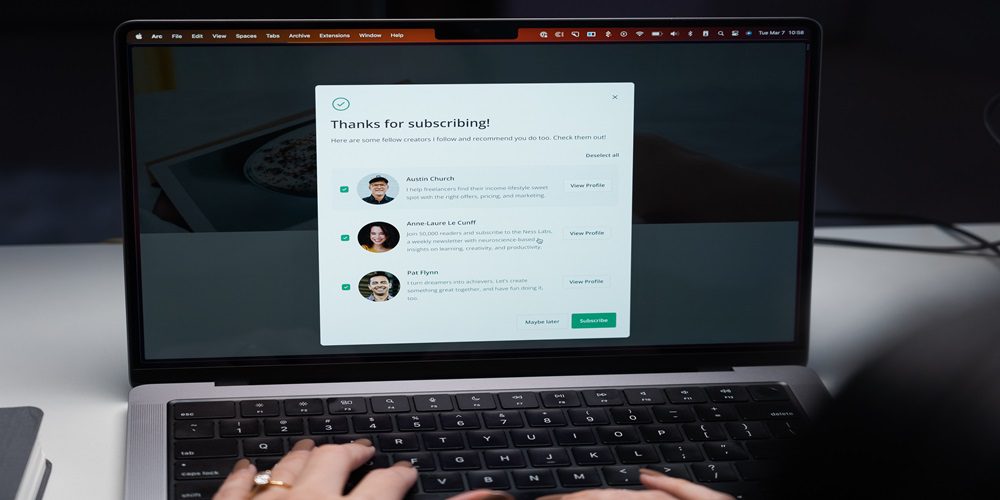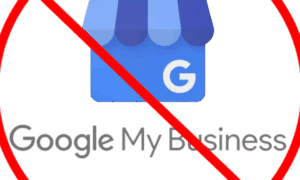Welcome to the world of email marketing, where words have the power to captivate and convert. In a digital era flooded with countless messages vying for attention, how can you ensure your campaigns stand out from the clutter? Fear not! This blog post is here to shed light on the art and science of optimizing and managing your email marketing efforts. Get ready to unleash the potential of this mighty tool as we delve into strategies that will skyrocket your open rates, boost conversions, and ultimately transform subscribers into loyal customers. It’s time to tap into “The Power of Email Marketing” – let’s begin our journey toward unlocking its full potential!
Introduction: What is Email Marketing and Why is it Important?
Email marketing has become a crucial tool for businesses of all sizes to reach and engage with their customers. It involves sending targeted messages or promotions through email to a list of subscribers who have opted in to receive communications from the business. This form of digital marketing has been around for decades, but its effectiveness has only increased over time.
What is Email Marketing?
Email marketing is an essential component of any successful digital marketing strategy. It allows businesses to communicate directly with potential and current customers, build brand awareness, and drive conversions by promoting products, services, or events through email. With the ability to segment email lists based on demographics, interests, or previous interactions with a business, companies can tailor their messages specifically to each audience group.
Why is it Important?
1. Cost-Effective: Compared to traditional forms of marketing like print ads or direct mail campaigns, email marketing is incredibly cost-effective. Businesses can send thousands of emails at a low cost, making it accessible for small businesses with limited budgets.
2. Reach and Engagement: According to Statista.com, there are currently over 4 billion active email users globally – making it one of the most widely used communication channels worldwide. By utilizing email marketing, businesses have the potential to reach a vast audience and drive engagement with their brand.
3.Company-Customer Relationship Building: With email marketing, businesses can establish personalized communication with their customers by addressing them by name and tailoring content based on their preferences and behaviors. This not only makes customers feel valued but also strengthens the relationship between the company and its customers.
4. Measurable Results: With email marketing, businesses can easily track results such as open rates, click-through rates, and conversions. This helps companies understand what works and what doesn’t and make necessary changes to their strategy to improve results.
Understanding Your Target Audience for Effective Campaigns
Knowing your target audience is crucial for any successful email marketing campaign. Understanding who your audience is, what they are interested in and how to connect with them is the key to creating effective campaigns that convert. In this section, we will discuss why understanding your target audience is important and provide some tips on how to do it effectively.
Importance of Understanding Your Target Audience
Knowing your target audience allows you to tailor your message and content specifically towards them. This level of personalization makes your emails more relevant and increases the chances of engagement from your subscribers. By understanding their needs, preferences, and pain points, you can create targeted campaigns that speak directly to their interests.
Relevant content leads to higher open rates, click-through rates, and ultimately conversion rates. It also helps build trust with your audience as they feel like you understand their specific needs and are not just sending out generic messages.
Tips for Understanding Your Target Audience
1. Conduct Market Research: One of the best ways to understand your target audience is by conducting thorough market research. This includes gathering demographic information such as age, gender, location, income level, education level as well as psychographic information such as interests, values, beliefs and attitudes.
2. Use Analytics: Utilizing analytics tools can provide valuable insights into the behavior of your audience. You can track metrics such as open rates, click-through rates and conversion rates to get a better understanding of what resonates with your subscribers.
3. Create Buyer Personas: Buyer personas are fictional representations of your ideal customers. They are created based on research and data about your target audience. Creating detailed buyer personas can help you better understand your audience’s pain points, motivations, and decision-making process.
4. Survey Your Subscribers: Don’t be afraid to directly ask your subscribers for feedback. You can send out surveys or polls to gather information about their preferences and interests. This will not only help you understand your target audience but also show that you value their opinions.
5. Monitor Social Media: Social media is a great tool for getting to know your audience. You can use platforms like Facebook, Twitter, and Instagram to engage with them, monitor conversations about your brand, and gather insights into their interests and preferences.
6. Analyze Your Competition: Take a look at what your competitors are doing in terms of email marketing. Look at the strategies they are using and how they are targeting their audience. This can provide valuable insights into what works and what doesn’t in your industry.
Crafting the Perfect Subject Line to Improve Open Rates
Crafting the perfect subject line is one of the most crucial aspects of email marketing. It is the first thing that your subscribers see and can make or break their decision to open your email. In fact, studies have shown that 47% of recipients decide whether to open an email based on the subject line alone.
To improve your open rates and capture your audience’s attention, here are some tips for crafting the perfect subject line:
1. Keep it short and concise: Your subject line should ideally be between 30-50 characters long. This ensures that it is displayed fully on mobile devices and doesn’t get cut off in crowded inboxes.
2. Use action-oriented language: Use strong verbs to create a sense of urgency and encourage readers to take action. Words like “limited time offer,” “exclusive,” or “don’t miss out” can entice readers to open your email.
3. Personalize whenever possible: Personalization can significantly increase open rates as it makes the reader feel like the message was created specifically for them. Most email marketing platforms allow you to insert custom fields such as name or location into your subject lines.
4. Experiment with emojis: Emojis can add visual interest, personality, and emotion to your subject lines, making them stand out in a crowded inbox. However, use them sparingly and only if they align with your brand’s tone and audience.
Creating Engaging Email Content to Drive Clicks and Conversions
Email marketing is a powerful tool that can help drive clicks and conversions for your business. However, in order to see the best results, it’s important to create engaging email content that resonates with your audience. Below are some tips on how to create compelling email content that will entice readers to click through and take action.
1. Personalization Is Key
One of the most effective ways to create engaging email content is by personalizing it for your audience. This means tailoring your messages based on their interests, behaviors, demographics, or past interactions with your brand. By using data and segmentation tools, you can send targeted emails that feel more relevant and personalized to the recipient.
For example, instead of sending a general promotional email about all of your products or services, try segmenting your list based on previous purchases or browsing history. Then craft specific messaging that speaks directly to their interests and needs.
2. Use Eye-Catching Subject Lines
The subject line is often the first thing that people see when they receive an email from you. It’s what determines whether they open the email or not. Therefore, it’s crucial to make sure your subject lines are enticing enough to capture their attention.
Some tips for creating eye-catching subject lines include using numbers (e.g., “5 Secrets for Improving Your Marketing Strategy”), posing a question (e.g., “Want to Save Money? Check Out Our Latest Deals!”), or creating a sense of urgency (e.g., “Last Chance to Get 50% Off!”). Experiment with different subject line strategies and keep track of which ones perform the best for your audience.
3. Keep Your Content Short and Sweet
People’s attention spans are getting shorter, so it’s important to make your email content concise and to the point. Avoid long blocks of text and instead, break up your content into short paragraphs or bullet points.
You can also use visuals, such as images or videos, to help tell your story and make your emails more visually appealing. Just be sure to optimize them for mobile devices, as many people now read emails on their phones.
4. Emphasize Benefits Over Features
When promoting a product or service in your email, it’s important to highlight the benefits rather than just listing out features. People are more likely to take action if they understand how what you’re offering will benefit them directly.
For example, instead of saying “Our new software has 10 exciting features,” try saying something like “Our new software will save you hours of time with its user-friendly interface.” This approach puts the customer’s needs first and shows them how your product or service can improve their life or business.
5. Include a Clear and Compelling Call to Action (CTA)
Every email you send should have a clear and compelling call to action that prompts readers to take a specific action, such as making a purchase, signing up for a webinar, or subscribing to your newsletter. Make sure your CTA is highly visible and stands out from the rest of your content.
You can also create a sense of urgency by using language like “limited time offer” or “only X spots left.” This can motivate people to click through and take action before it’s too late.
Utilizing Personalization and Segmentation Strategies for Maximum Impact
To truly maximize the impact of your email marketing campaigns, it is essential to utilize personalization and segmentation strategies. These techniques allow you to tailor your messages specifically to your audience, increasing relevancy and engagement.
Personalization refers to incorporating personalized elements into your email campaigns, such as using the recipient’s name in the subject line or body of the email. This simple yet effective tactic can help create a more personal connection with your subscribers and make them feel valued.
Another way to personalize your emails is by segmenting your subscriber list. Segmentation involves dividing your email list into smaller groups based on specific characteristics such as demographics, behavior, interests, or preferences. This allows you to send targeted messages that cater to each group’s unique needs and interests.
By utilizing personalization and segmentation together, you can create highly tailored emails that are more likely to resonate with individual subscribers. This level of customization not only improves open rates but also increases click-through rates and overall ROI.
Here are some key tips for effectively implementing personalization and segmentation in your email marketing campaigns:
1. Start with Data Collection: The first step in successful personalization and segmentation is collecting relevant data from your subscribers through sign-up forms or surveys. This information will provide valuable insights into their interests, demographics, purchase history, etc., which you can use for targeting purposes.
2. Use Dynamic Content: Dynamic content allows you to personalize your emails by automatically swapping out specific elements (e.g., images, text, offers) based on the recipient’s data. This means that each subscriber will receive a customized email tailored to their interests and preferences.
3. Segment Based on Demographics: One of the simplest ways to segment your email list is by demographics such as age, location, gender, or income level. This can help you create more targeted messages and offers that are relevant to each group.
4. Analyze Behavioral Data: Another effective way to segment your list is by analyzing subscribers’ behavior and engagement with previous emails. For example, you can target subscribers who have opened or clicked on certain emails in the past with similar content or offers.
5. Consider Purchase History: If you have an eCommerce store, segmenting your email list based on purchase history can be highly effective. You can send targeted emails promoting related products or offering discounts on items they have previously purchased.
6. Test and Refine: It’s essential to continually test and refine your personalization and segmentation strategies to see what works best for your audience. Use A/B testing to experiment with different subject lines, offers, or personalized elements and track the results.
Tracking and Analyzing Your Campaign Performance with Metrics
Tracking and analyzing your campaign performance with metrics is a crucial step in optimizing and managing your email marketing campaigns. By measuring the success of your campaigns, you can make data-driven decisions to improve your strategy and achieve better results. In this section, we will discuss the key metrics you should track and analyze in order to effectively monitor the performance of your email marketing.
1. Open rates
Open rates refer to the percentage of recipients who open your emails among all those who received it. This metric gives you an idea of how successful your subject lines are in capturing the attention of subscribers. A high open rate indicates that you have succeeded in piquing the interest of your audience, while a low open rate could mean there is room for improvement in your subject lines or targeting.
2. Click-through rates (CTR)
The click-through rate measures the number of clicks on links within an email as a percentage of total opens. This metric reflects how engaged subscribers are with your content and call-to-action (CTA). A high CTR means that subscribers found value in what you were offering, while a low CTR could indicate that either the content or CTA needs improvement.
3. Conversion rates
Conversion rates measure how many recipients took action after clicking through an email. This could include making a purchase, signing up for a service, or filling out a form. Tracking conversion rates give insight into how effective your emails are at driving desired actions from subscribers.
4. Unsubscribe/Churn rates
Unsubscribe or churn rates measure the number of individuals who have opted out of receiving your emails. While it is natural to have some unsubscribe rates, a high number could indicate that there may be an issue with the quality or relevance of your content.
5. Bounce rates
Bounce rates show the percentage of emails that were not successfully delivered to recipients’ inboxes. There are two types of bounces: hard and soft. A hard bounce means that an email could not be delivered permanently, while a soft bounce means that an email could not be delivered temporarily. High bounce rates can negatively impact your sender reputation and deliverability, so it is important to regularly clean your email list to remove invalid addresses.
6. List growth rate
List growth rate measures how quickly your subscriber list is growing over time. This metric can help you gauge whether you are effectively attracting new subscribers and retaining existing ones. A healthy list growth rate is typically around 10% per year.
7. Engagement levels
Engagement levels measure how active subscribers are with your emails. This includes metrics like how many times they have opened, clicked, or forwarded an email. Tracking engagement levels can give you insight into which types of content and campaigns resonate most with your audience.
Managing Your Email List: Best Practices and Segmenting Techniques
Building an email list is just the first step in creating a successful email marketing campaign. The real work lies in managing and optimizing your list to ensure that your messages are reaching the right audience at the right time. In this section, we will discuss best practices for maintaining and growing your email list, as well as techniques for segmenting your audience to deliver more targeted and effective emails.
Best Practices for Managing Your Email List:
1. Regularly Cleanse Your List: It’s important to regularly review and clean up your email list to remove inactive or unengaged subscribers. This not only ensures that you are reaching an interested audience but also improves your deliverability rates. Use tools like email verification services or manually review your subscriber lists to remove any invalid or inactive addresses.
2. Make it Easy to Unsubscribe: While it may seem counterintuitive, having an easily accessible unsubscribe option can actually benefit your email marketing efforts. If someone no longer wants to receive emails from you but cannot find a way to opt-out, they may mark your emails as spam which can harm your sender’s reputation.
3. Personalize Your Emails: Personalization goes beyond just using someone’s name in the subject line or greeting – it involves tailoring content and offers based on subscribers’ interests and behaviors. Use data gathered from previous interactions with subscribers such as purchase history, website browsing behavior, or survey responses to create personalized email experiences.
Tips for A/B Testing and Continuous Optimization of Your Campaigns
A/B testing and continuous optimization are crucial components of successful email marketing campaigns. They allow you to constantly refine and improve your emails, ensuring that they are engaging and effective in reaching your target audience. In this section, we will cover some tips for conducting A/B testing and implementing ongoing optimization strategies to maximize the impact of your email marketing campaigns.
1. Define Your Goals
Before you start any A/B testing or continuous optimization efforts, it is important to clearly define your goals. What do you want to achieve with your email marketing campaign? Is it increasing open rates, click-through rates, conversions, or all of the above? Having a clear understanding of your objectives will guide your testing and optimization efforts.
2. Test One Variable at a Time
When conducting A/B tests, it’s essential to only change one element at a time. This could be the subject line, sender name, call-to-action button placement or design – any variable that can potentially impact the performance of your email. By changing only one variable at a time, you can accurately measure its impact on key metrics.
For example, if you want to test two different subject lines for an upcoming promotion, send each version out to equal segments of your subscribers and track which performs better in terms of opens and clicks. If you change more than one variable at a time (e.g., subject line AND CTA button color), it becomes difficult to determine which element was responsible for the changes in performance.
3. Keep Sample Sizes Consistent
When conducting A/B tests, it’s crucial to have a large enough sample size to accurately measure the impact of your changes. If you’re testing subject lines or different versions of email content, make sure you send each version out to an equal number of subscribers. This will help ensure that your results are statistically significant and reflective of your overall subscriber base.
4. Monitor Results and Make Data-Driven Decisions
As you conduct A/B tests, be sure to closely monitor your results. You can use email marketing software or analytics tools to track key metrics such as open rates, click-through rates, and conversions. Use this data to guide your decision-making process and make changes accordingly. For example, if one subject line consistently performs better than others, consider using it more frequently in future campaigns.
5. Consider Segmentation
Segmentation is the practice of dividing your subscriber list into smaller groups based on specific criteria such as demographics, behavior or interests. By segmenting your audience, you can tailor your email content and offers to be more relevant and appealing to each group. A/B testing within these segments can help you identify the most effective messaging for each group.
Conclusion
Email marketing has proven to be a powerful tool for businesses of all sizes, and it shows no signs of slowing down. By following these tips for optimizing and managing your campaigns, you can reach your target audience effectively and see an increase in sales, leads, and customer engagement. So don’t underestimate the power of email marketing – start implementing these strategies today to take your business to the next level!



































